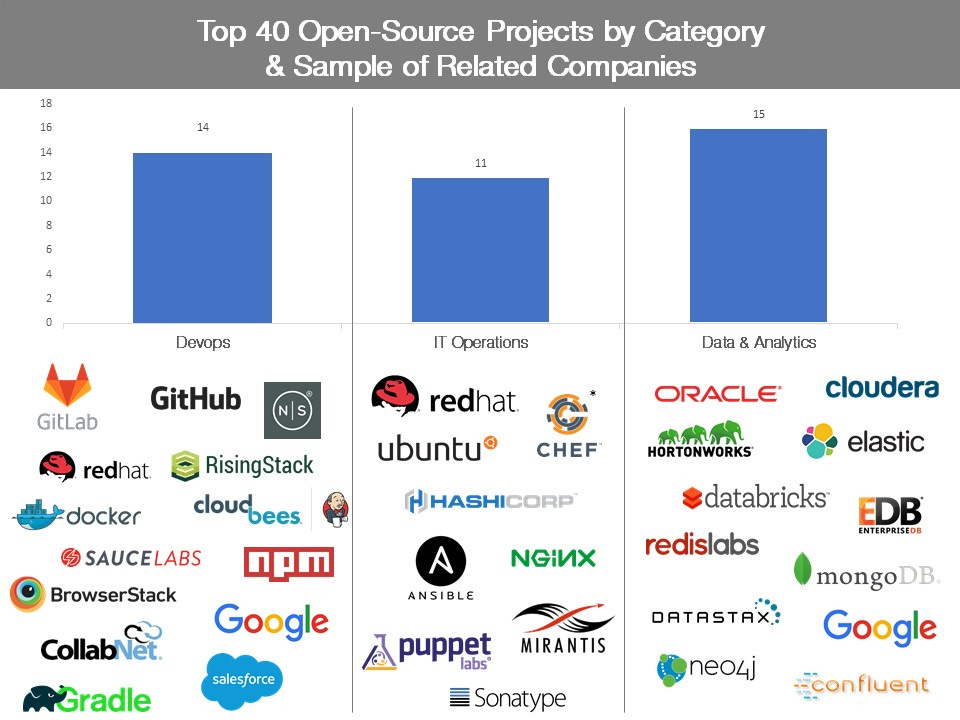#16 - How do open-source companies like Elastic, Ubuntu, MongoDB make money?
Open Source is not always free
Dear reader, If you found value from the regular editions, I would greatly appreciate it if you could share the newsletter with your network. You can click here to tweet about it. If you stumbled across this directly, you can find the previous editions here.
Open Source Software (OSS)
When a software program is open-source, it means the program's source code is freely available to the public. Any developer can modify and share its design. You do not typically have to pay for the license to use any open-source software for personal or professional use. Unlike commercial software, open-source programs can be modified and distributed by anyone and are often developed as a community rather than by a single organization.

Benefits of Open Source
Distribution: Low barrier to entry for users because the code is free and open, and facilitates exceptionally rapid adoption. eg. Open source is how a project like Elasticsearch goes from a few downloads in 2010 to over 250 million in 2018.
Fast Evolution: An effective way to make the best product possible. Each download is an opportunity for the project to improve and evolve. Security gets hardened as users scrutinize the code. Reliability and resiliency become more established with rigorous testing across various architectures and environments.
Extensible: extensibility increases as users experiment with new use cases and build integrations, add-ons, plugins, and frameworks that expand the project’s reach.
Community: With open source, a community forms with the first download. That first download leads to the first direct contact between author and user in a forum or IRC, which leads to questions or observations, followed by the first open issue, then the first pull request, and finally the first improvement or enhancement. Together they may have fixed a bug or corrected a typo in the documentation. No matter how big or small, the software is better thanks to collaboration. Now, imagine that process after millions of downloads.
Open Source Companies Business Model
Although open-source software is free for developers to use, there are huge companies behind the open-source software that need revenue to run their operations. Here are many ways by which these companies make money:
Professional Services: Open-source software can be commercialized from selling services, such as training, technical support, or consulting, rather than the software itself. Another possibility is offering open-source software in source code form only, while providing executable binaries to paying customers only, offering the commercial service of compiling and packaging of the software.
Enterprise Deployments: Many Fortune 500 enterprises require the deployment of the OSS on-premise. Companies typically charge a lot for such deals.
Dual Licensing Model: In a dual licensing model, the vendor develops software and offers it under an open-source license but also under separate proprietary license terms. The proprietary version can be licensed to finance the continued development of the free open-source version. Customers may prefer a no-cost and open-source edition for testing, evaluation, proof of concept development, and small scale deployment. If the customer wishes to deploy the software at scale, or in proprietary distributed products, the customer then negotiates for a commercial license to an enterprise edition.
Customizations &Premium Features: Some companies sell proprietary but optional extensions, modules, plugins, or add-ons to an open-source software product. This approach is a variant of the freemium business model. The proprietary software may be intended to let customers get more value out of their data, infrastructure, or platform, e.g., operate their infrastructure/platform more effectively and efficiently, manage it better, or secure it better.
Branded merchandise: Some open-source organizations such as the Mozilla Foundation and the Wikimedia Foundation sell branded merchandise articles like t-shirts and coffee mugs.
Software as a Service: Selling subscriptions for online accounts and server access to customers is one way of adding value to open-source software. You can either install the software on your servers for free (by paying for the server) or you can pay for the hosted software.
Voluntary Donations: Many OSS companies enable donations on their repositories for allowing the users to donate as much money as they’d like. GitHub has launched a Sponsors program to facilitate seamless donations in the form of sponsorships.
Many billion-dollar companies started with an open-source approach and have made their name in the developer community.
However, the Open Source movement is not just limited to Software. Hardware companies like Arduino, Raspberry Pi, MakerBot etc. are some examples of companies that have open-sourced their hardware.
For more such content, follow me on Twitter.
If you stumbled across this post and would like to receive a weekly article about innovative business models, subscribe now!



